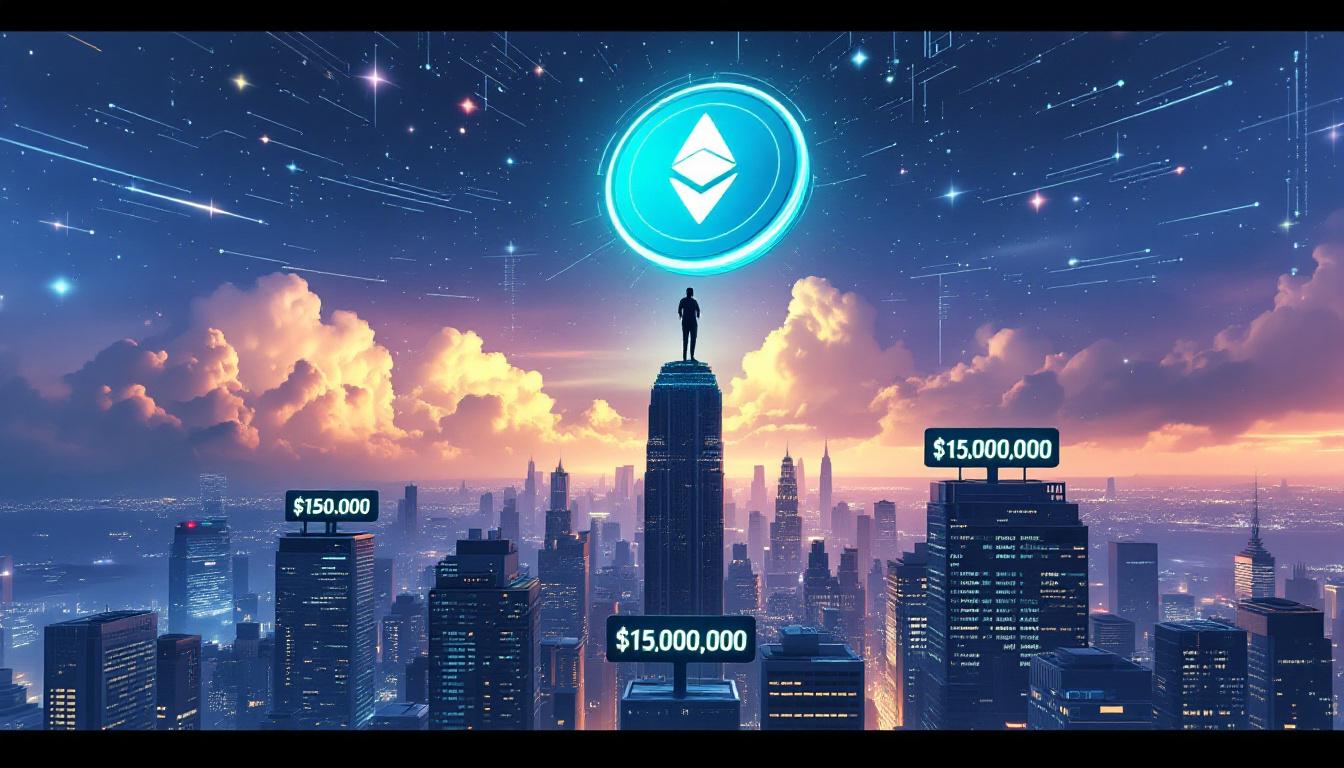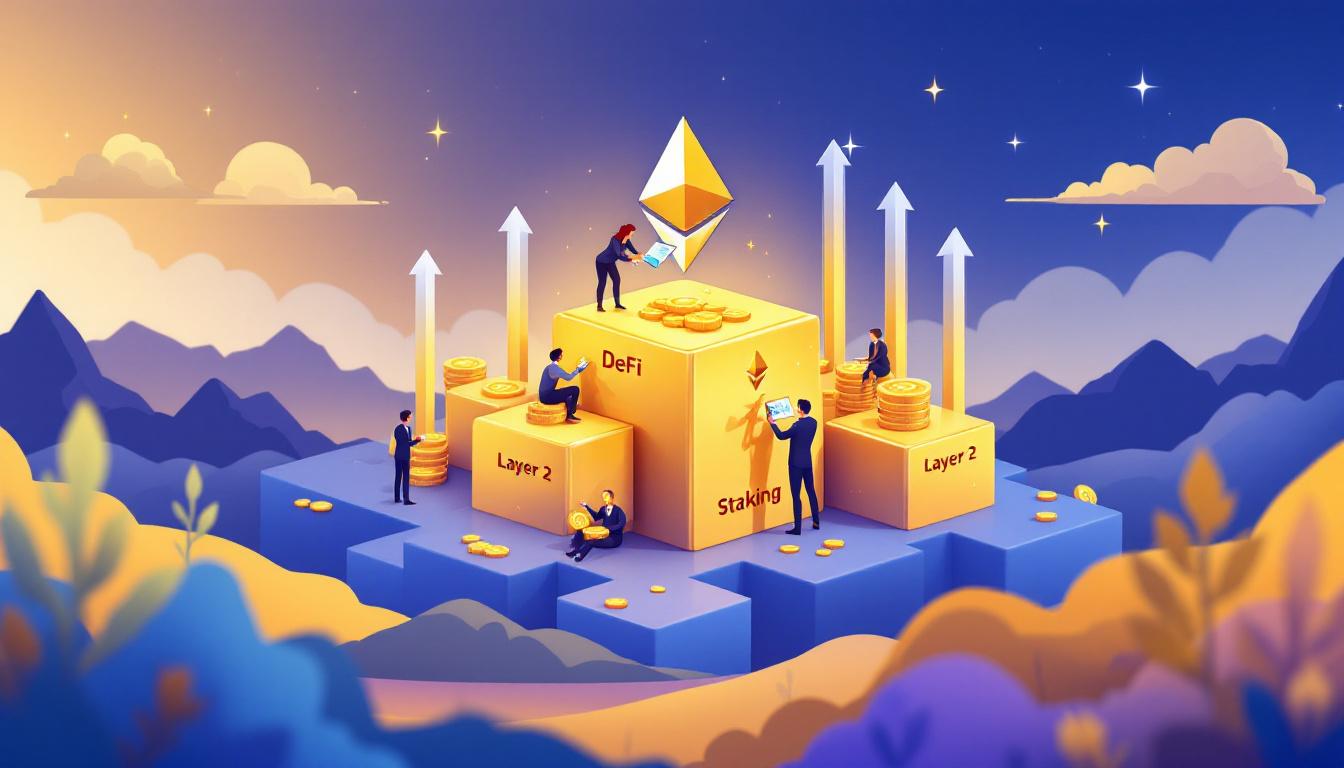Introduction
Imagine logging in to your crypto wallet and finding a single Ethereum (ETH) token is now worth over $1 million. Sounds impossible? According to EMJ Capital’s Eric Jackson, not only is it doable—it might come sooner than skeptics expect. In this deep-dive, we break down Jackson’s bold analysis, humanize the technical jargon, and walk you through the steps and risks to such a dramatic move. Whether you hold ETH, just got into crypto, or want to understand the “why” behind crypto’s wildest price targets, this is your go-to guide.
The Big Prediction: ETH to $1.5 Million?
Eric Jackson is convinced the market is underestimating Ethereum’s future. He believes:
- ETH can rise 100-fold from current prices
- $1.5 million per ETH is possible in the long run
- The next major jump could “catch everyone off guard”
Why So Bullish?
Jackson’s argument isn’t hype. He points to real innovations and changing business landscapes:
- Ethereum’s deflationary design (supply shrinks over time)
- Major finance and tech companies using ETH’s blockchain for real-world payments and products
- Looming approval of Ethereum ETFs with staking in the US
According to Jackson, every one of these trends can bring Ethereum higher—possibly much higher.
ETF Approval: Ethereum’s Upcoming Game-Changer
Remember how Bitcoin ETFs sparked a huge price rally? Many think Ethereum has already “priced in” its ETF, but Jackson disagrees. Current spot Bitcoin ETFs have seen $6.9 billion in activity, while Ethereum’s have managed just $1.4 billion—a huge gap.
But the real “fire starter” could be ETF products that allow staking.
- What is staking? It lets ETH holders earn rewards by helping run the network securely.
- Why does this matter for ETFs? When ETFs enable staking, huge institutional investors may chase ETH for both price growth and steady yield.
A staked Ethereum ETF, says Jackson, would “compound Ether’s already deflationary tokenomics.” That means less supply, more demand, and higher prices.
Real World Adoption: ETH Beyond “Digital Oil”
Jackson says Ethereum is “quietly becoming the dominant rail system to transact in crypto”—and that’s a game-changing piece. ETH is no longer just a trade asset or “digital oil”—it’s becoming infrastructure.
Who Uses Ethereum Now?
- Circle (the company behind USDC, a top global stablecoin)
- Coinbase (a leading crypto exchange)
- Shopify (a giant in online business)
- Robinhood (a popular trading platform)
More mainstream companies are integrating or interacting with Ethereum’s blockchain. If this trend accelerates, and if even a small slice of global commerce shifts toward ETH, the value could rocket.
The Bullish Path: Price Targets for ETH
Jackson’s scenarios make waves:
- Base case: $10,000 ETH by the end of the current bull cycle (likely by March 2026)
- Bull case: $15,000 if layer 2 blockchains and mass staking beat expectations
- “100-bagger” scenario: Over $1.5 million, within a decade, if DeFi, stablecoins, and platforms like Robinhood and Coinbase push even harder into Ethereum
His core prediction doesn’t even include massive growth from DeFi (decentralized finance) or layer 2s—just ETF and institutional adoption alone.
Are These Numbers Wild?
For reference:
- In 2016, ETH traded well under $20. Most thought $1,000 was a fantasy goal.
- In July 2025, ETH is about $3,000, after peaking much higher in previous booms.
If the internet rails of the world shift from dollar banking to Ethereum rails, what’s a realistic price? As more value is created and moved over Ethereum, the higher caps make sense.
What Could Stop ETH From Surging?
Even in a hype cycle, risk is real. What are the biggest threats to a “100x” scenario?
- Tech Failures: If scaling solutions like layer 2s fail to work smoothly, costs and congestion could keep users away.
- Competition: While Ethereum is the leader, blockchains like Solana, Avalanche, and others are racing to offer cheaper, faster alternatives.
- Regulation: Aggressive regulation of crypto, DeFi, or stablecoins in major economies could slow adoption.
- ETF Letdown: If staking ETFs are rejected or poorly designed, institutional inflows might stay flat.
Investors should consider the upside buzz and the real risks. As always—never put in more than you can afford to lose.
What Would $1.5 Million ETH Mean for the World?
This isn’t just about early adopters getting rich. If ETH rockets 100x, here’s what could follow:
For Investors
- Early ETH holders become wealthy, but so do those betting big on the new cycle
- ETF holders (including pensions and institutions) gain access to a huge new asset class
For Business
- E-commerce and fintech might shift more transactions onto blockchains
- Stablecoins like USDC could become as common as dollars in apps
For Finance and Society
- Lending, savings, and international transfers become faster and cheaper
- Banking and investments could be open to billions with just a phone and internet
- The idea of “paying in crypto” could go mainstream, with ETH as the backbone
Why Jackson’s Analysis Stands Out
Unlike the wildest “to the moon” calls, Jackson’s argument is rooted in on-chain data, real product growth, and unfolding regulation changes. He’s not saying the price explodes overnight—but rather, as ETH becomes more useful and more scarce, steady upward pressure builds.
He also sees the $1.5 million number as a result of “ETH commerce.” If ETH rails replace even 1% of global banking and payment transfers, the value transferred yearly could support a much larger market cap for the token.
ETH’s Deflationary Advantage
Ethereum’s new “burn” feature (part of its protocol after recent upgrades) means parts of transaction fees are destroyed with each use. As more apps and transactions run on ETH, the supply shrinks.
Combined with staking (which locks up more coins), ETH becomes one of the only mainstream money assets with a supply that can actually shrink over time. Scarcity meets demand—a classic recipe for a price surge.
L2 and DeFi—The Wildcards
Layer 2s—blockchains that “sit on top” of Ethereum for faster or cheaper transactions—add more use without slowing ETH’s core. DeFi, NFT marketplaces, and clever blockchain games keep traffic high.
If these innovations keep spreading, they act like turbochargers for price. Jackson’s “100-bagger” odds go up much faster.
The Human Side: ETH as a Tool For Everyday Life
Crypto’s promise isn’t just wealth. It’s the idea that digital ownership, faster payments, and decentralized finance can empower regular people. At $1.5 million, ETH would be more than an investment—it could be a daily currency, a gateway to new kinds of financial products, and a bridge to every digital market.
Conclusion: Hype, Hope, and Responsible Optimism
Eric Jackson’s $1.5 million ETH prediction is bold, but it’s more than daydreaming. It’s based on current tech adoption, upcoming ETF staking, and real business on Ethereum’s rails. Still, plenty of risk remains—from tech and competition to regulation and market mood.
ETH may never see 100x again. Or, one day, it really might—thanks to millions of users quietly using Ethereum networks for things big and small.
Key Takeaways
- EMJ Capital’s Eric Jackson thinks ETH could hit $1.5 million, a 100x surge.
- His forecast relies on a US ETF that allows staking, growing corporate adoption, and Ethereum’s deflationary economics.
- Skeptics warn about competition and market risk—but ETH’s broader adoption could make even huge numbers possible.
- DeFi, layer 2s, and real business use are powerful wildcards for upside.
- For crypto users, the future is open—and ETH, win or lose, will play a starring role.
To contact us click here.




